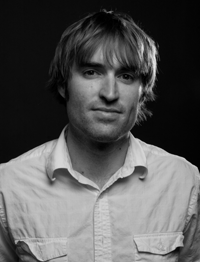|
There are 6 blog entries from July 2011
After receiving our new framing and truss dimensions from Tsen Structural, I went ahead and built yet another Google Sketchup model of the design plan. These four images just show various angles. Most of the site plan is exactly to scale, though some of the trees may be slightly out of place. These models do not include any specific details of the two internal structures, but they are framed more or less how they will exist.
 Front of property Front of property
 Back of property illustrating PV Back of property illustrating PV
 Looking from north to south down Axel Lane Looking from north to south down Axel Lane
 Closeup of structures Closeup of structures
|
With the help of Matt from Cotera+Reed, we have located an MEP engineer for the project. The company is called Tom Green & Company Engineers and is incidentally run by a guy named Tom Green. To those unfamiliar with an MEP engineer, it stands for Mechanical, Electrical, and Plumbing. Basically these guys are responsible for figuring out all of the electrical (voltage and amperage) requirements for the property space, for designing conduit and electrical boxes, for designing and calculating A/C and heating systems, and for handling all of the water and wastewater connections. I haven’t seen any of the quotes yet, but I believe that the MEP is generally the 2nd or 3rd most costly part of this entire pre-development process.
There are still a number of things to consider for the project with respect to green development standards. We are definitely intending to utilize the large rooftop for photovoltaic connections (solar) (also shortened as PV), but we’re also considering implementing a geothermal system, particularly because I happen to have access to an existing well on the property. Evidently under Texas State law, I am free to use the water in this well as needed (which could be a big help in this case for irrigation considerations).
 A commercial geothermal system diagram. The closed loop system is dug into the ground below or beside the building and acts as a giant thermal heat-sync. A commercial geothermal system diagram. The closed loop system is dug into the ground below or beside the building and acts as a giant thermal heat-sync.
|
Although still very technical (as opposed to aesthetic) in nature, I was pretty excited to receive these structural truss CAD images from our structural engineer, Tsen Structural. The top left picture below shows the actual truss positions as they will sit over the foundation footprint. In all, there will be nine ( 9 ) 38? long inverted trusses to support the entire roof system. Between each of the trusses will be a system of steel cable wire purlins. The four corners of the building will also have cross bracing purlins.
 The 9 trusses over the footprint The 9 trusses over the footprint
 A double inverted truss with tension rods A double inverted truss with tension rods
 A single inverted truss with tension rods A single inverted truss with tension rods
 Cross braces found in the building corners Cross braces found in the building corners
|
 Lenticular Trusses at the Raleigh, NC airport Lenticular Trusses at the Raleigh, NC airport
I had actually come across the same type of trusses back in March of 2011 at the Raleigh/Durham airport in North Carolina. I was in absolute awe of the way they had implemented them there, an amazing combination of wooden beams with steel supports and tension rods. Admittedly our system will not be nearly as impressive, but the geometry of them is still very appealing. The architects of this airport say that it is a type of Lenticular Truss system. A snapshot of those trusses can be found to the top right.
 Shell view from the front (SW corner) Shell view from the front (SW corner)
 Shell view from the rear (NE corner) Shell view from the rear (NE corner)
The above models were created by Mary Franzosa (a Cotera+Reed employee) with an architectural program called Rhinoceros. I’ve never actually used the program myself, but seems like a considerably more intricate modeling version of Google Sketchup. From what I could gather, there is considerably more attention paid to the layering capabilities. I believe as we get more granular with the interior CAD development, that we’ll be able to produce more and more intricate models.
|
Cotera+Reed has been busy working on the various floorplans and elevations to the Axel Warehouse. The current thinking is to have the interior offices set back from the remainder of the warehouse and steel building walls. This should create a pretty interesting architectural overhang all around the perimeter of the offices while providing much needed shade and privacy from the western side of the property (the street-side).
The shell of the building will make somewhat of a ‘hat’ over the entire bow-string truss system. Tsen Structural is currently working on the structural engineering needs so that we can identify just how many trusses will be required and what type of load(s) they will be able to sustain.
 The westerly elevation The westerly elevation
 A proposed first floor layout A proposed first floor layout
 A proposed second floor layout A proposed second floor layout
|
A grading plan is basically a look at how the topographical contours of the property will need to be shaped. This process will happen before and during development and is required for commercial design standards.
There is definitely some general good that comes from re-shaping the land as it would be undesirable to have water collect around the sides of the building. Unfortunately due to the nature of commercial design standards in Austin, you can also see that the entire NW corner of the property (top right in the picture) will be graded roughly a 2 feet below the rest of the property to serve as a water retention pond in heavy rains.
Also per city requirements, should we exceed 20% of the total land cover with impervious cover, we would also be required to create a water quality pond. This process can be considerably expensive given the engineering costs involved (perhaps an additional $20,000+). Fortunately we have avoided this process thus far.
|
|

